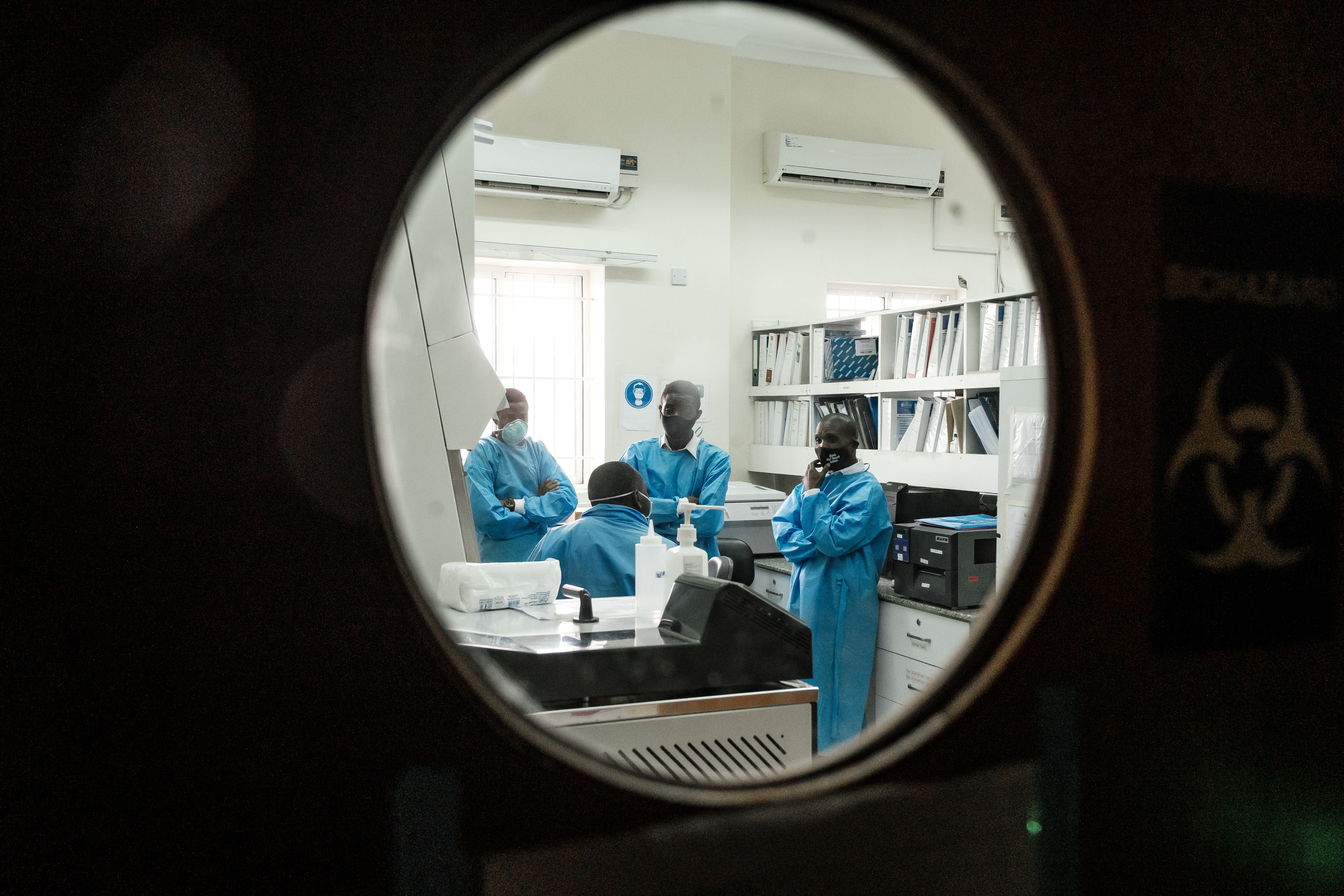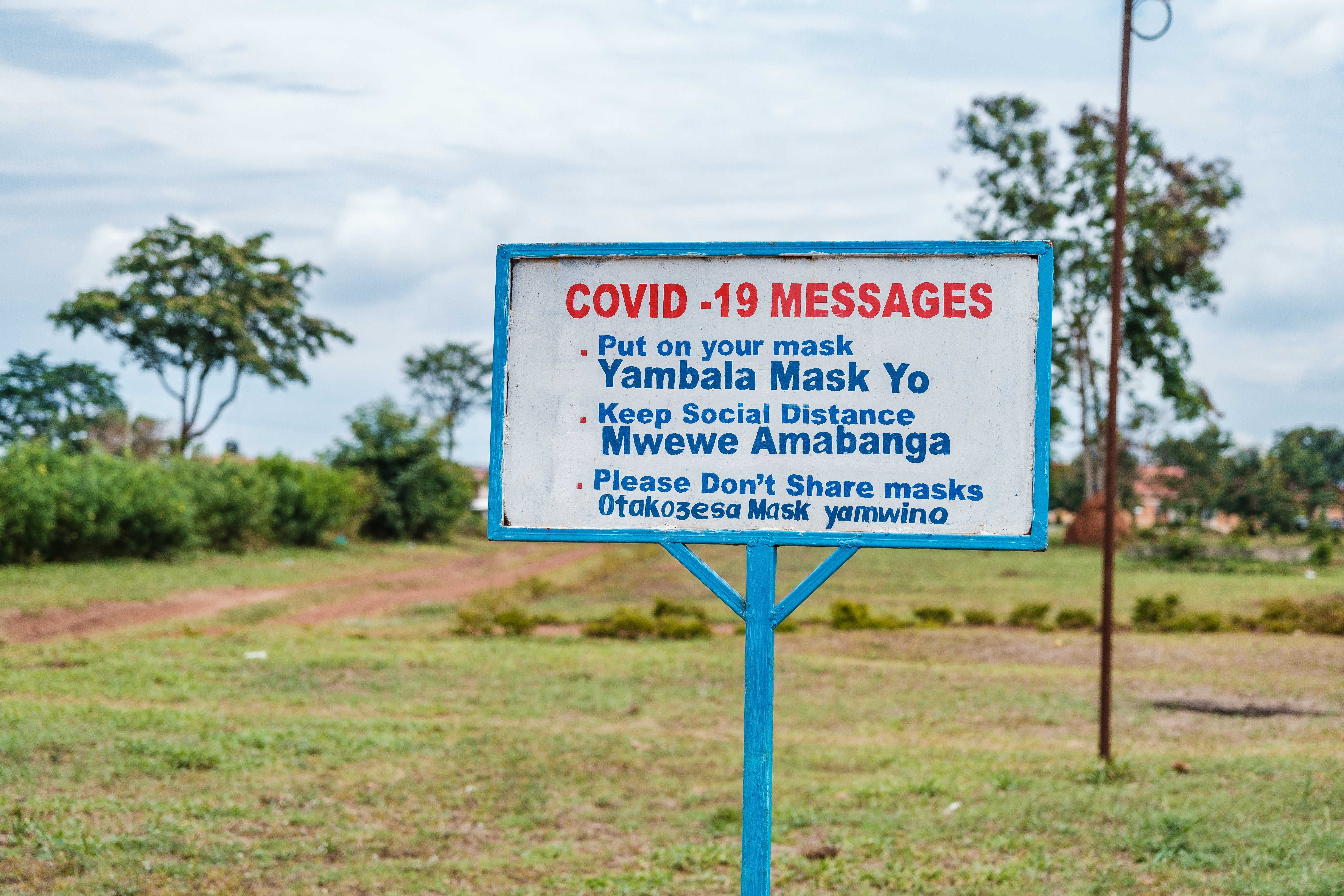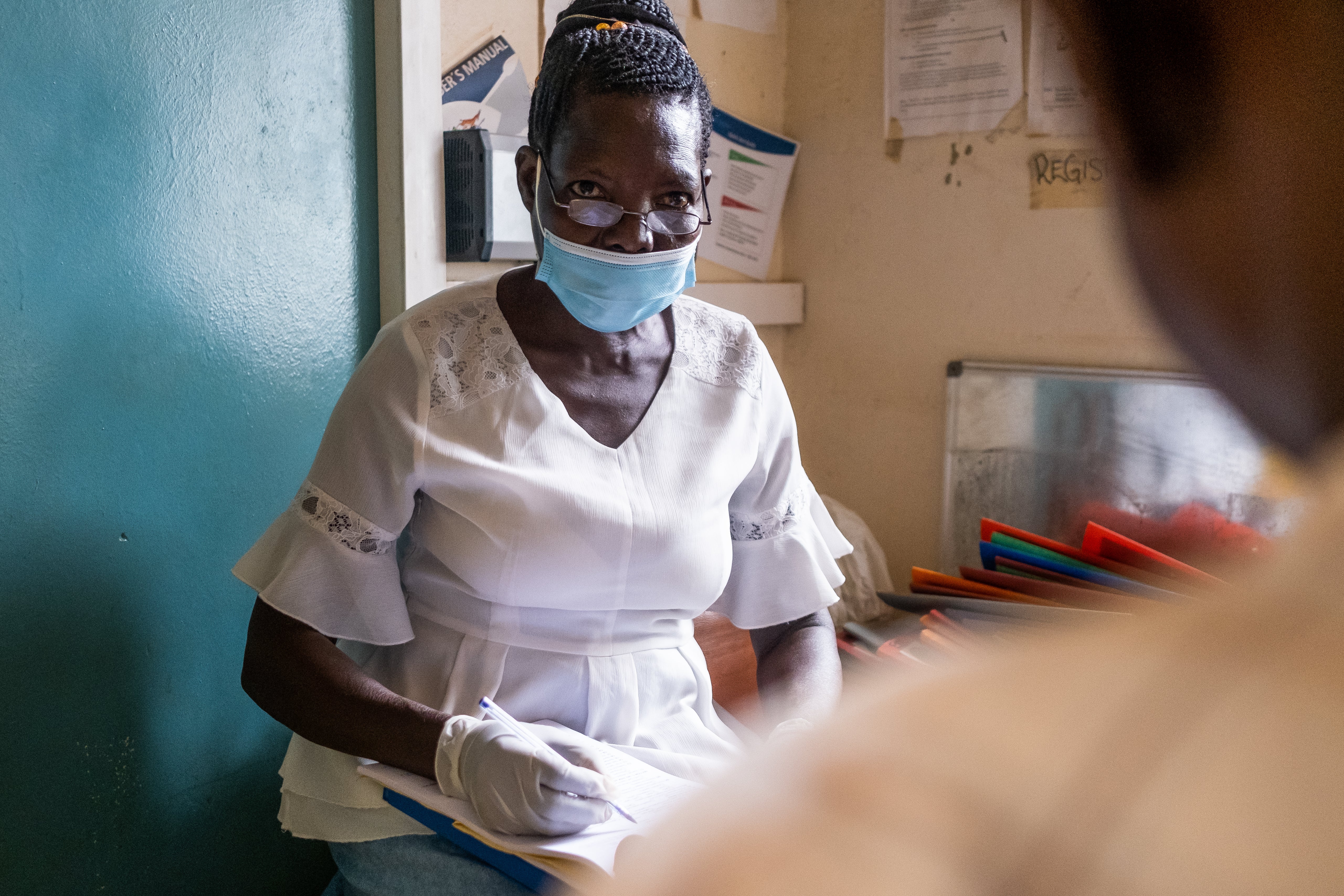COVID-19 RESPONSE AND MAINTENANCE OF ESSENTIAL HEALTH SERVICES IN UGANDA
CONTENTS

KEY INSIGHTS
Several key interventions that built on Uganda’s experience with previous epidemics helped the country delay the spread of COVID-19, especially at the beginning of the pandemic in 2020. Uganda’s aggressive early response and ability to use existing tools and structures to respond to the COVID-19 emergency may have limited case counts, while other countries were overwhelmed. Strong, centralized public health leadership supported and enforced early preventive measures and relied on data for evidence-based decision making. Finally, officials and health care providers developed innovative strategies to maintain essential health services (EHS) and minimize the pandemic’s effects on routine systems of care.
This research has been led by partners at the Makerere University School of Public Health and was supported and funded by the Bill & Melinda Gates Foundation and by the Exemplars in Global Health program at Gates Ventures.
Drivers of Successful Pandemic Response
The World Health Organization (WHO) and Global Health Security Agenda have developed useful frameworks for assessing epidemic and pandemic preparedness and response, which we have adapted for this research. Through the Exemplars in COVID-19 Response work, we aim to derive lessons learned about the drivers of a successful response and have developed a conceptual framework that breaks down the drivers into three groups: context and system factors, interventions, and outcomes. The following sections on Uganda’s response to COVID-19 and the maintenance of EHS are organized according to this framework.This research was led by partners at the University of Ghana School of Public Health in collaboration with Makerere University School of Public Health and was supported and funded by the Bill & Melinda Gates Foundation and by the Exemplars in Global Health program at Gates Ventures.
What were the most important elements of Uganda’s COVID-19 response?
There are many challenges with conducting research during an evolving pandemic, including quality of data and availability of interviewees involved in the response. In the absence of true impact measurements, we used alternative metrics as proxy indicators and developed criteria to help identify best practices, including overall reach and access, repeated mentions in key informant interviews, innovative or adaptive responses, potential for scale and impact, and equity considerations.
National, governmental and population-level measures: social distancing and mobility restrictions
Imposing stringent public health and social measures to limit the spread of COVID-19
Even before Uganda confirmed its first case of COVID-19 in March 2020, officials imposed stringent public health and social measures (PHSMs), also known as nonpharmaceutical interventions) to prevent its spread. These included movement restrictions and school closures. From March 2020 until August 1, 2020, Uganda recorded just 1,176 cases of COVID-19 or about 26 cases per million people (compared to 700 cases per million in Africa over the same time period)., While surveillance and reporting issues resulted in undercounting globally, Uganda’s early response was impressive. Experts believe the country may have been able to avert widespread community spread during this early period because of the quick and aggressive actions its government took to limit population mobility and mitigate the transmission of COVID-19 from person to person.

Contextual Factors: previous experience with epidemics
Applying strategies and tools developed for previous outbreaks

Between 2000 and 2019, Uganda experienced seven Ebola outbreaks and four Marburg outbreaks. This past experience with infectious diseases that have epidemic and pandemic potential was quickly employed to address COVID-19. Starting early in 2020, the country adapted the coordination, laboratory, surveillance, and digital health structures it developed during those health crises for the COVID-19 context. For example, a well-established laboratory network that had been built for other diseases, such as HIV and tuberculosis, helped facilitate an increase in testing capacity for COVID-19. Similarly, thousands of Ugandan health care providers and community health workers (known as village health teams, or VHTs) had already been trained on infection prevention and control, epidemic surveillance, and other critical aspects of outbreak response.
System factors: pandemic preparedness capacity
Supporting adherence to preventive measures via centralized public health leadership
Immediately after WHO declared COVID-19 a public health emergency of international concern at the end of January 2020, the Ugandan Ministry of Health (MoH) activated a centralized Public Health Emergency Operations Center (PHEOC) and National Task Force comprising public health experts and representatives from government agencies. This had become routine practice during health emergencies in Uganda: the MoH established the PHEOC in 2013.
Within these familiar structures, multisectoral and multilevel coordination committees offered clear technical guidance and direction to district and local officials and health care providers and helped translate emerging data into national policy and practice.
This strong, centralized leadership made it possible for health officials in Uganda to implement key PHSMs, such as movement restrictions and mask mandates, in March and April 2020. It also galvanized public support and bolstered adherence to those measures (see figure below). For instance, four surveys conducted between April 2020 and September 2021 found that between 72% and 82% of respondents were very or somewhat satisfied with the government’s response to COVID-19 in Uganda.

Health system-level response measures: service delivery adaptation
Developing innovative strategies to mitigate obstacles to EHS

Indicators such as childhood vaccine coverage and outpatient health facility visits showed that early PHSMs to control the spread of COVID-19 were associated with a sharp decline in the use of EHS in Uganda. Researchers believe that mobility restrictions and fear of COVID-19 may have had an effect on key EHS indicators.
However, from the beginning of the COVID-19 pandemic, Ugandan officials prioritized EHS maintenance. Interventions to mitigate supply- and demand-side obstacles to EHS included establishing committees to coordinate service continuity efforts, shifting key tasks to VHTs, and capitalizing on existing technology for telemedicine and supervision. Authorities and health workers further adapted the delivery of routine services by establishing special clinics and outreach opportunities, designating facilities for COVID-19 treatment, and implementing strategies for community drug distribution and multi-month drug dispensing.
Public health risk communication has been a long-standing strength of the Ugandan health system; and in 2020 and 2021, officials developed and disseminated a wide variety of communications for the pandemic context. Many of these focused on promoting EHS maintenance. By early 2021, key indicators had recovered from their initial dip (for example, see DTP figure).
COVID-19 RESPONSE AND MAINTENANCE OF ESSENTIAL HEALTH SERVICES IN UGANDA

Ask an Expert
Our team and partners are available to answer questions that clarify our research, insights, methodology, and conclusions.
